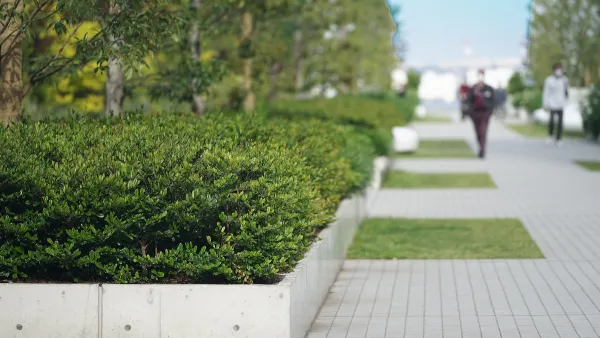A review of the current research into the effectiveness of green streets and green infrastructure finds gaps in our understanding of what works, and where.

"Surprisingly, there are very few peer-reviewed research papers that have evaluated Green Streets on a stormwater control and treatment basis," according to an article by Jonathan Page, who looks at some of the existing data and also makes recommendations for tailoring green streets to the specific needs of the natural and built characteristics of different cities.
According to Page, the “newness” of the green streets movement and the difficulty in monitoring and instrumenting green street projects contribute to a lack of data and research about the effectiveness of green streets.
Projects in Seattle and Portland have provided some non-peer reviewed dataset, "but the study and evaluation is typically not as rigorous as those found in a peer-reviewed journal."
Moreover, the "excellent" results in downstream water quality protection and combined sewer overflow (CSO) reductions from those examples can't be expected in all parts of the country (or world), according to Page. Portland, Seattle, and other communities in the Pacific Northwest are perfect locations for green streets because "[r]ainfall patterns and storms in that ecoregion are characterized by low rainfall intensities and long durations." In other ecoregions, like the Southeast, "storms tend to have a much higher rainfall intensity and shorter duration, which means a lot of above ground storage is needed to temporarily retain runoff for infiltration and treatment after the storm has passed."
FULL STORY: Do Green Streets Actually Work for Stormwater Management?

Planetizen Federal Action Tracker
A weekly monitor of how Trump’s orders and actions are impacting planners and planning in America.

Map: Where Senate Republicans Want to Sell Your Public Lands
For public land advocates, the Senate Republicans’ proposal to sell millions of acres of public land in the West is “the biggest fight of their careers.”

Restaurant Patios Were a Pandemic Win — Why Were They so Hard to Keep?
Social distancing requirements and changes in travel patterns prompted cities to pilot new uses for street and sidewalk space. Then it got complicated.

Platform Pilsner: Vancouver Transit Agency Releases... a Beer?
TransLink will receive a portion of every sale of the four-pack.

Toronto Weighs Cheaper Transit, Parking Hikes for Major Events
Special event rates would take effect during large festivals, sports games and concerts to ‘discourage driving, manage congestion and free up space for transit.”

Berlin to Consider Car-Free Zone Larger Than Manhattan
The area bound by the 22-mile Ringbahn would still allow 12 uses of a private automobile per year per person, and several other exemptions.
Urban Design for Planners 1: Software Tools
This six-course series explores essential urban design concepts using open source software and equips planners with the tools they need to participate fully in the urban design process.
Planning for Universal Design
Learn the tools for implementing Universal Design in planning regulations.
Heyer Gruel & Associates PA
JM Goldson LLC
Custer County Colorado
City of Camden Redevelopment Agency
City of Astoria
Transportation Research & Education Center (TREC) at Portland State University
Camden Redevelopment Agency
City of Claremont
Municipality of Princeton (NJ)





























